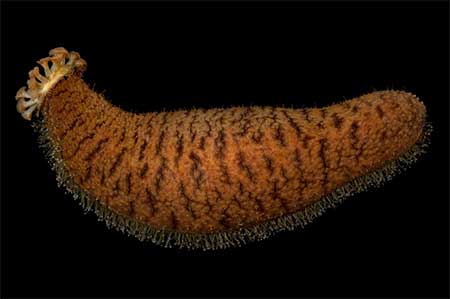Sea cucumber smuggling and CBI probe
Marine biodiversity is very important for Marine ecosystem. For this , Marine invertebrate creatures needs to be protected. In this context , The Central Bureau of Investigation (CBI) began its probe into illegal sea cucumber trade in Lakshadweep on 10th October as 10 fresh consignments were traced and seized by the local forest department.
2,500 sea cucumbers weighing 1,500 kg and worth Rs 7 crore have been seized so far this year. Recently, sea cucumbers worth Rs 1.56 crore seized by the Lakshadweep forest department at south Agatti Islands is an eye opening phenomena for environment inforcement agencies.
About Sea Cucumber :
According to WWF , Known as the 'cleaners of the sea,' sea cucumbers play a vital role in maintaining ecosystem health. Regulating international trade of sea cucumbers will also benefit the ecosystems in which they live, particularly coral reefs. Calcium carbonate is one of the by-products of sea cucumber’s digestion of sand and it remains the key component of coral reefs. Coral reefs must have to accumulate calcium carbonate for survival and so the sea cucumbers play a vital role in preserving the coral reefs.
Sea cucumbers are echinoderms—like starfish and sea urchins. There are some 1,250 known species, and many of these animals are indeed shaped like soft-bodied cucumbers. All sea cucumbers are ocean dwellers, though some inhabit the shallows and others live in the deep ocean. They live on or near the ocean floor—sometimes partially buried beneath it.
Sea cucumbers, particularly eggs and young larvae, are prey for fish and other marine animals. They are used as delicacy in China , japan , South East and East Asian countries.
Sea cucumbers are typically sold dried, canned, frozen, or as powders and extracts. With a spike in demand and prices over recent years, a kilogram of dried sea cucumber is sold for as high as Rs 65,000-68,000 per kg in international markets.
Sea cucumbers feed on tiny particles like algae, minute aquatic animals, or waste materials, which they gather in with 8 to 30 tube feet that look like tentacles surrounding their mouths. It's an integral part of marine food web and marine food chain . Sea cucumbers can breed sexually or asexually.
Protection under indian legislation :
Sea cucumbers are single branched marine organisms (invertebrates) . They are protected under Schedule I under the Wildlife Protection Act (WPA), 1972 so their trade is banned. The Ministry of Environment, Forests and Climate Change imposed a total ban on harvesting and transporting sea cucumbers in 2001. The ministry has also declared it endangered species. As per Schedule I of Wildlife Protection Act (WPA), sea cucumbers of marine environments enjoy the same status as tigers and lions. CITES committee has also decided to include three species of sea cucumbers on Appendix II in 2019. Now , Convention on International Trade in Endangered Species of Wild Fauna and Flora is concerned with sea cucumber smuggling regulation.
World’s first conservation area for sea cucumbers in india :
In the face of recurring large scale smuggling attempts targeting endangered sea cucumbers, the Lakshadweep administration has created the world’s first conservation area for sea cucumbers. Extending over a 239 square km radius of Cheriyapani reef, an uninhabited, independent and solitary atoll, it will be known as Dr. KK Mohammed Koya Sea Cucumber Conservation Reserve.
Other than the sea around Lakshadweep islands and Andaman Nicobar islands, the Gulf of Mannar at the confluence of the Indian Ocean and Bay of Bengal in Tamil Nadu is also home to sea cucumbers.
Defensive Adaptations in Sea Cucumber :
When threatened, some sea cucumbers discharge sticky threads to ensnare their enemies. Others can mutilate their own bodies as a defense mechanism. They violently contract their muscles and jettison some of their internal organs out of their anus. The missing body parts are quickly regenerated.







